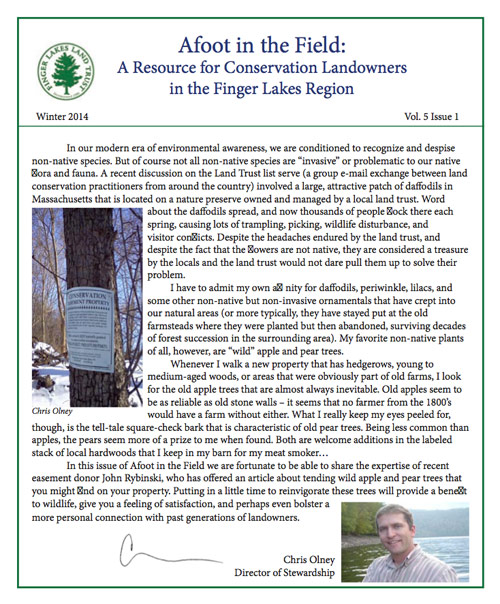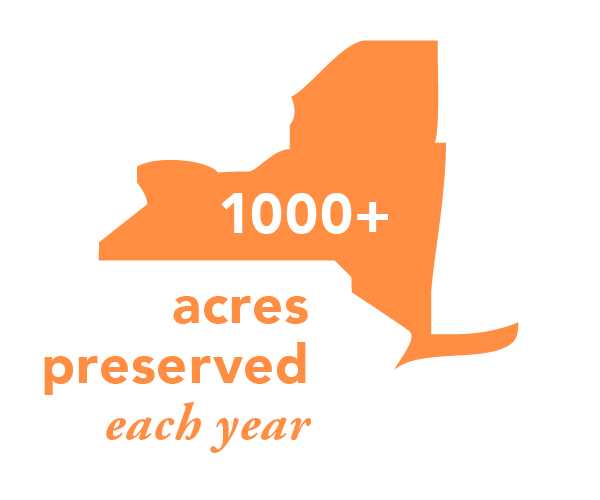Download: Afoot in the Field, Volume 5, Issue 1 (PDF)
Published Winter-Spring 2014
From the Introduction:
In our modern era of environmental awareness, we are conditioned to recognize and despise non-native species. But of course not all non-native species are “invasive” or problematic to our native flora and fauna. A recent discussion on the Land Trust list serve (a group e-mail exchange between land conservation practitioners from around the country) involved a large, attractive patch of daffodils in Massachusetts that is located on a nature preserve owned and managed by a local land trust. Word about the daffodils spread, and now thousands of people flock there each spring, causing lots of trampling, picking, wildlife disturbance, and visitor conflicts. Despite the headaches endured by the land trust, and despite the fact that the flowers are not native, they are considered a treasure by the locals and the land trust would not dare pull them up to solve their problem.
I have to admit my own affinity for daffodils, periwinkle, lilacs, and some other non-native but non-invasive ornamentals that have crept into our natural areas (or more typically, they have stayed put at the old farmsteads where they were planted but then abandoned, surviving decades of forest succession in the surrounding area). My favorite non-native plants of all, however, are “wild” apple and pear trees.
Whenever I walk a new property that has hedgerows, young to medium-aged woods, or areas that were obviously part of old farms, I look for the old apple trees that are almost always inevitable. Old apples seem to be as reliable as old stone walls – it seems that no farmer from the 1800’s would have a farm without either. What I really keep my eyes peeled for, though, is the tell-tale square-check bark that is characteristic of old pear trees. Being less common than apples, the pears seem more of a prize to me when found. Both are welcome additions in the labeled stack of local hardwoods that I keep in my barn for my meat smoker.
In this issue of Afoot in the Field we are fortunate to be able to share the expertise of recent easement donor John Rybinski, who has offered an article about tending wild apple and pear trees that you might find on your property. Putting in a little time to reinvigorate these trees will provide a benefit to wildlife, give you a feeling of satisfaction, and perhaps even bolster a more personal connection with past generations of landowners…
Download: Afoot in the Field, Volume 5, Issue 1 (PDF)
You can download Afoot in the Field, our biannual stewardship pamphlet for landowners, in PDF format. See all issues here.


